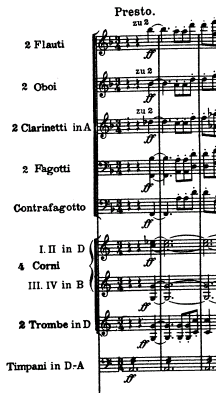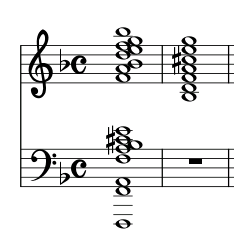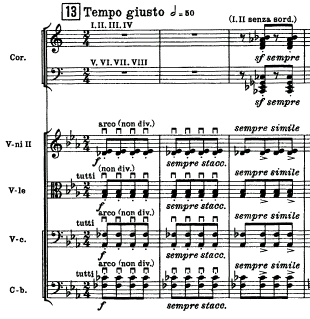This is just before the baritone entrance:


I do not know anything about harmony, but I imagine this chord is the superposition of two simpler chords. I write the chord below in two staves. In the second measure I rewrite it without octave duplications.

If one adds one other third interval above (2nd measure; the chord in the 2nd measure is just the same chord written in a simpler way), the Bb is reached again. Well, from here on I will make laugh more than one reader. Only seven notes are employed, and they look like the notes of a D minor scale, which is precisely the tonality here. Can this not be interpreted as a dominant seventh chord (A, C#, E, G) superimposed on a Bb, D, F chord? But then this second chord is one on the 6th degree? I do not know, but could somebody explain, pleeeeeease?


I do not know anything about harmony, but I imagine this chord is the superposition of two simpler chords. I write the chord below in two staves. In the second measure I rewrite it without octave duplications.

If one adds one other third interval above (2nd measure; the chord in the 2nd measure is just the same chord written in a simpler way), the Bb is reached again. Well, from here on I will make laugh more than one reader. Only seven notes are employed, and they look like the notes of a D minor scale, which is precisely the tonality here. Can this not be interpreted as a dominant seventh chord (A, C#, E, G) superimposed on a Bb, D, F chord? But then this second chord is one on the 6th degree? I do not know, but could somebody explain, pleeeeeease?






Comment